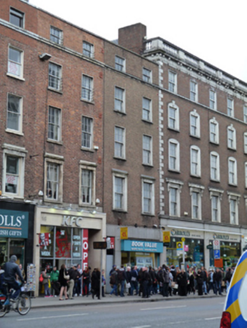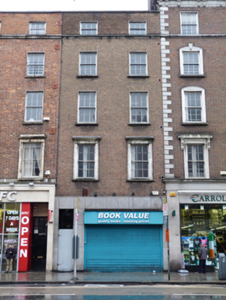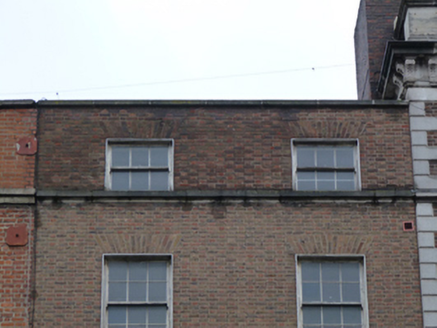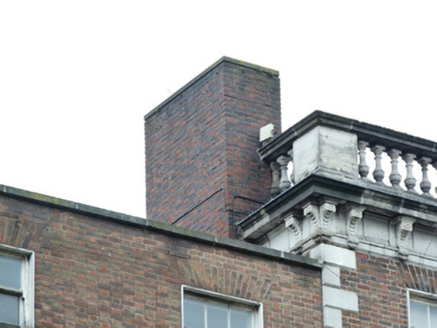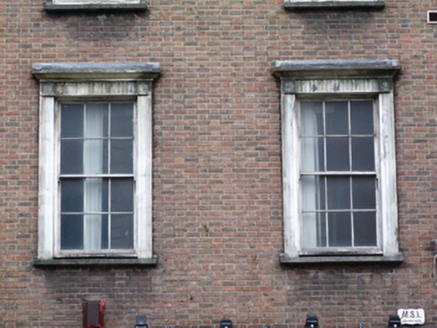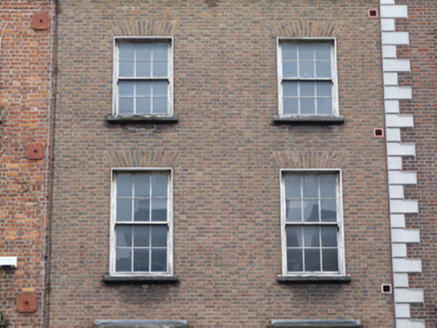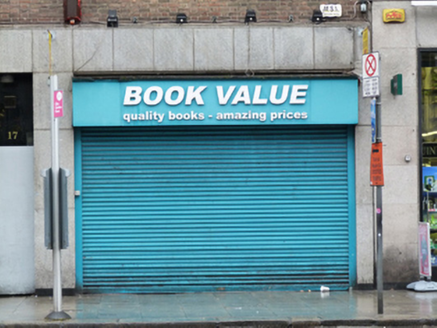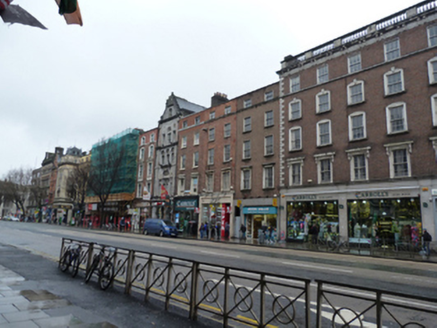Survey Data
Reg No
50020215
Rating
Regional
Categories of Special Interest
Architectural, Artistic, Historical, Social
Original Use
House
In Use As
Shop/retail outlet
Date
1790 - 1810
Coordinates
315969, 234297
Date Recorded
29/03/2015
Date Updated
--/--/--
Description
Terraced two-bay five-storey former house and shop, built c.1800, with recent shopfront to front (east) elevation. Now in commercial use. M-profile pitched slate roof, rear span hipped to south, hidden behind brick parapet with render coping, red brick chimneystack. Refaced brown brick walls laid in Flemish bond with ashlar granite cornice over third floor. Square-headed openings with render sills, raised render reveals, those to first floor having moulded masonry entablatures, three-over-three pane and six-over-six pane timber sliding sash windows. Recent stone cladding to shopfront. Situated to west side of Westmoreland Street.
Appraisal
Westmoreland Street, named after the tenth Earl of Westmoreland, was developed by the Wide Street Commissioners in the late eighteenth century as part of a network of streets connecting the newly built Carlisle Bridge (now O’Connell Bridge) and College Green. This building formed part of a unified terrace, designed by Henry Aaron Baker (1753-1836), of five-storey buildings formerly with stone shopfronts at street level. As new commercial and financial uses were introduced to the street in the second half of the nineteenth century, many façades were remodelled. Though the facade has been rebuilt in recent years, it shares form and fabric with the neighbouring buildings, contributing to a sense of continuity to the streetscape.
